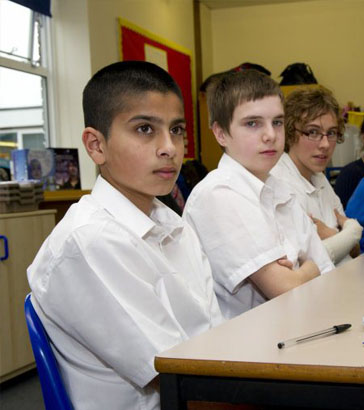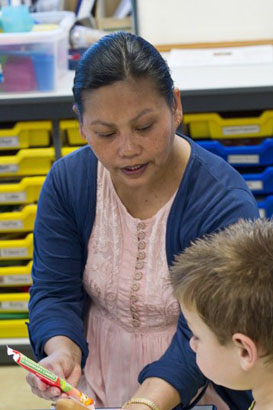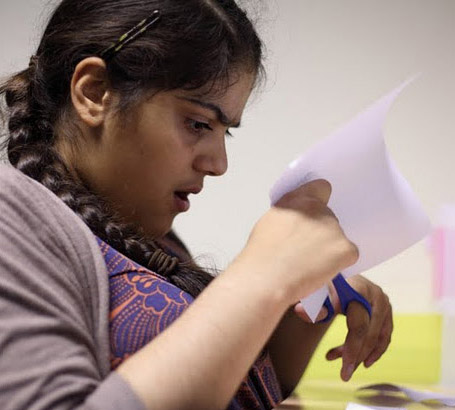
Compounding issues for families may be their race, culture or religion. Families with a child with a disability from black and minority ethnic (BME) communities are more likely than comparable white families to experience substantial inequality, discrimination and disadvantage relating to work, education, housing, transport and social services (Broomfield, 2004; Hatton et al, 2004). For many South Asian families, where the majority of the research has been focused (Mir, 2007), there is an urgent need for support. There are now substantially rising numbers of South Asian children with severe learning disabilities of school age in the UK (Hatton et al, 2004).

Families from BME communities are less likely than families from white communities to:
- Report their child's impairment.
- Take up services.
- Receive comparable disability benefits.
- Feel able to access systems which support children and young people with learning difficulties and their families.
They are more likely to:
- Feel less well informed.
- Experience poverty.
- Experience worklessness or low status employment.
Adapted from Contact a Family, 2006

- Practitioners should not engage with stereotypical views, which can alienate families and damage a potential partnership (Broomfield, 2004).
- Many families do not receive the available support they need as they are not aware of services (e.g. therapies, short breaks).
- They may lack knowledge relating to disability/special education (e.g. disability concepts, terminology and roles of professionals roles), hindering their level of involvement and access to support (Broomfield, 2004; Hatton et al, 2004).
- They may not have information about services available in other languages (North Wales Racial Equality Network, 2008).

- Families from BME communities often do not have the extended family support often assumed, even if family members live close by, due to inappropriate housing, occupational mobility and immigration policies (Mir et al, 2001).
- Language barriers can lead to families being perceived as dismissive or uninterested (Mir, 2007).
minority-ethnic families?

A policy of being 'blind' to colour, while it may feel inclusive, often does not acknowledge the needs of the family. Professionals need to:
- Acknowledge the experience of the family.
- Provide written support materials in different languages.
- Utilise any language skills of staff members, even if just for translation.
- Employ staff or a dedicated key worker who can speak a second language (e.g. South Asian or Eastern European languages).
- Make families aware of support opportunities available at school, or with local or national organisations, particularly those aimed at families from BME communities.
- Offer opportunities to link families from similar cultural backgrounds – through this, they may gain more information and companionship.
'Disabled children from black and other minority ethnic communities face difficulties and challenges in accessing and receiving services, and often those they receive are not sensitive to their culture and language or relevant to their needs. They face the double discrimination of being disabled and being from a minority ethnic group.' (Simon, 2006)
Critically review recent literature (e.g. North Wales Race Equality Network, 2008; Simon, 2006) around this double discrimination and summarise your conclusions in a 500 word overview.
Draw up a list of aims, objectives and guidelines good practice for working with BME families within your school community. Compare this with your relevant school policy documents. Do they need to be updated?
'Empowering individuals is one of the key principles in advocacy...For communities that place a high value on collectivity and interdependence, it could well be alienating and be seen to consciously undermine the principles on which a family structure may be based.' (NWREN, 2008)
Discuss the advocacy role of staff in your school in relation to disability and minority culture.

Broomfield, A. (2004) All Our Children Belong: Exploring the experiences of black and minority ethnic parents of disabled children, Parents for Inclusion.
Contact a Family (2006) About Families with Disabled Children – UK, London: CAF.
Corbett, C. and Perepa, P. (2007) Missing out? Autism, Education and Ethnicity: The reality for families today, London: National Autistic Society.
Hatton, C., Akram, Y., Shah, R., Robertson, J. and Emerson, E. (2004) Supporting South Asian Families with a Child with Severe Disabilities. London: Jessica Kingsley.

Mir, G., Nocon, A., Ahmad, W. and Jones, L. (2001). Mir, G., Nocon, A., Ahmad, W. and Jones, L. (2001) Learning Difficulties and Ethnicity, London: Department of Health.
Mir, G. (2007) Effective Communication with Service Users: A Race Equality Foundation briefing paper, London: Race Equality Foundation.
Newman, T. (2009) Ensuring All Disabled Children and Young People and their Families Receive Services which Are Sufficiently Differentiated to Meet their Diverse Needs, London: Centre for Excellence and Outcomes in Children and Young People's Services (C4EO).

North Wales Race Equality Network (2008) Race Equality in Practice Support Pack: Supporting advocates working with cultural diversity, Kidderminster/Cardiff: BILD/Welsh Assembly.
O'Hara, J. (2003) Learning disabilities and ethnicity: achieving cultural competence, Advances in Psychiatric Treatment, 9, 166-174.
Simon, J. (2006) Diversity Matters: Good practice in services for disabled children and their families from black and other minority ethnic communities, London: Council for Disabled Children.